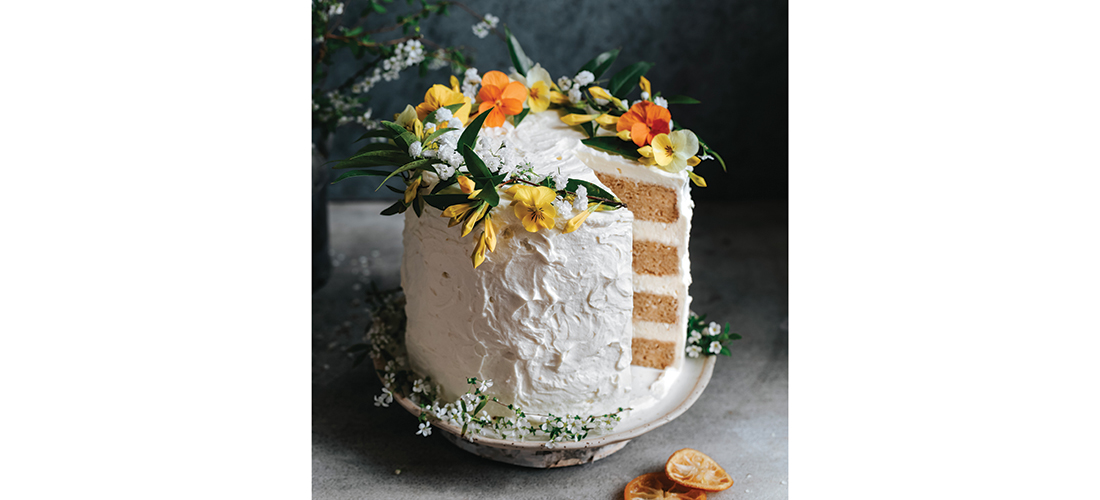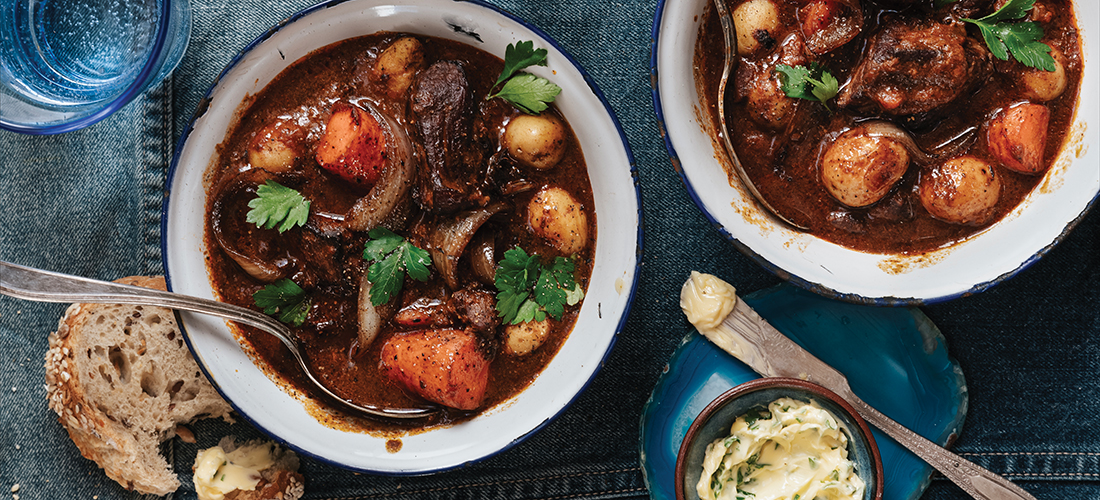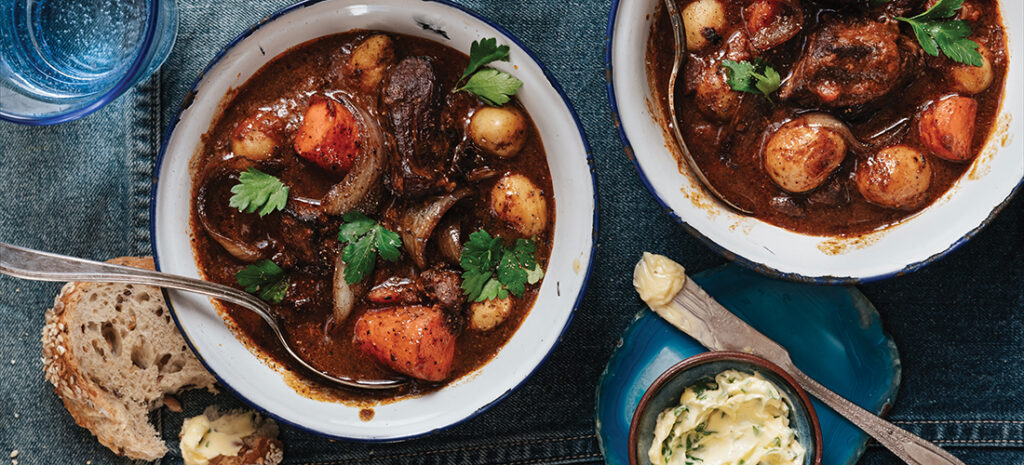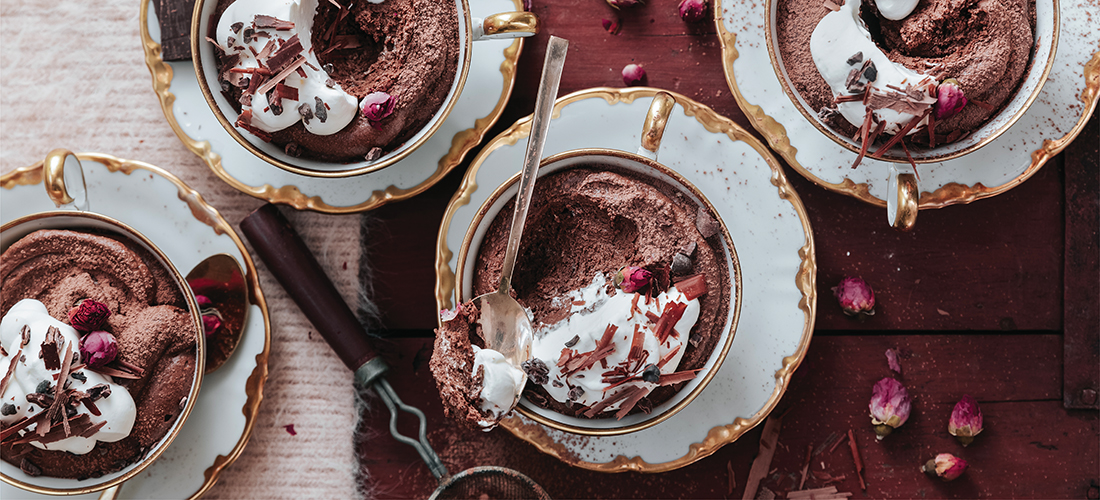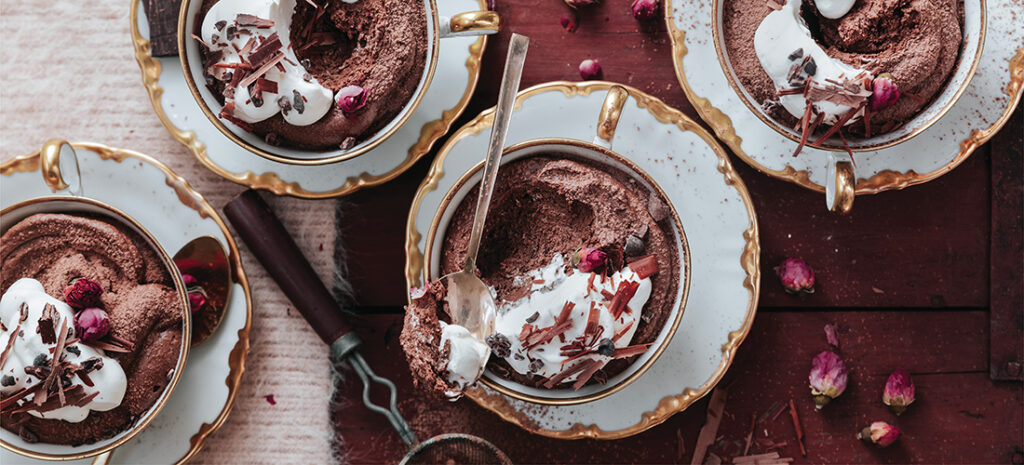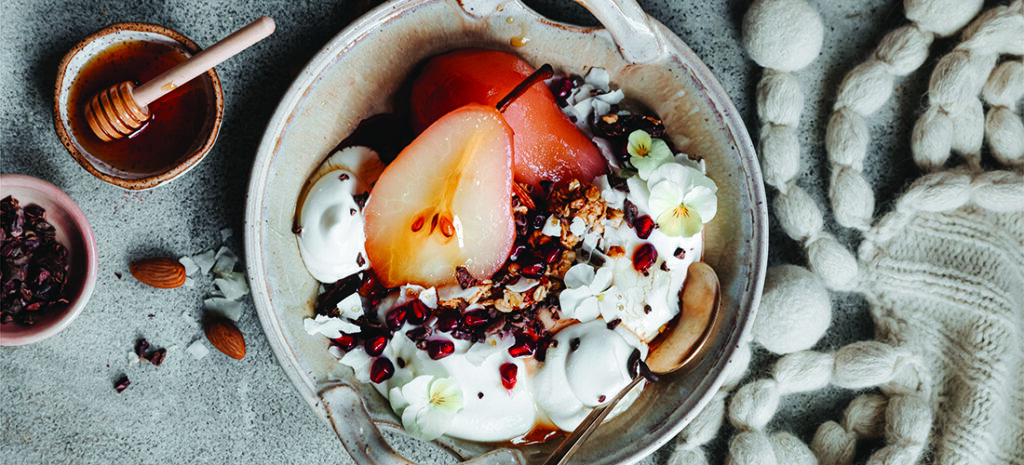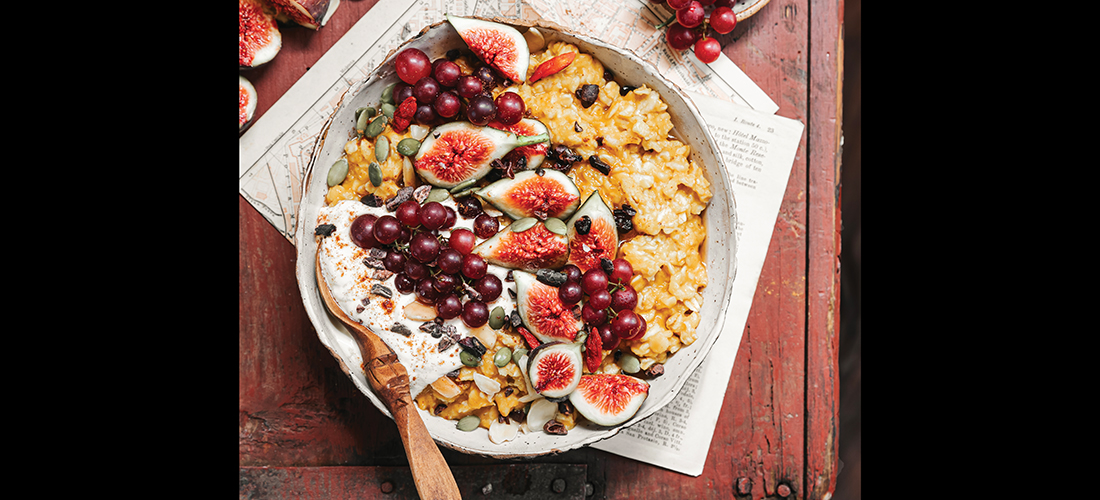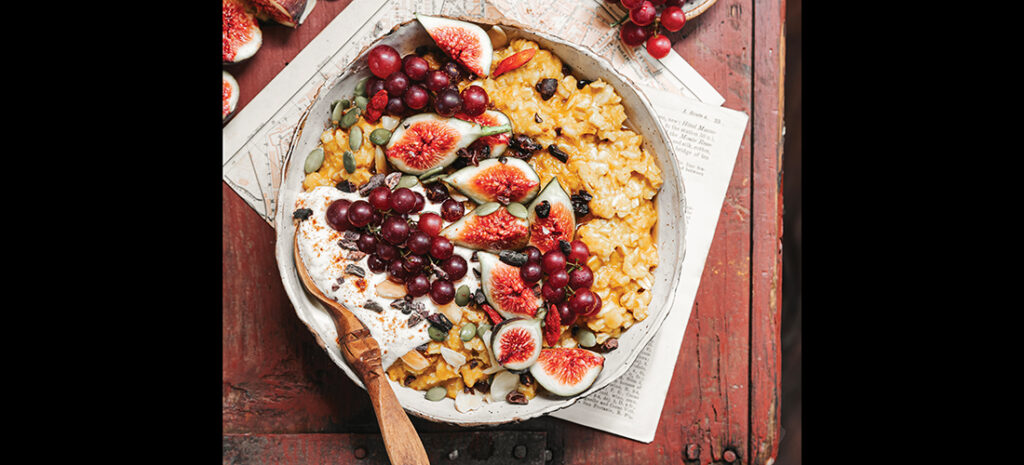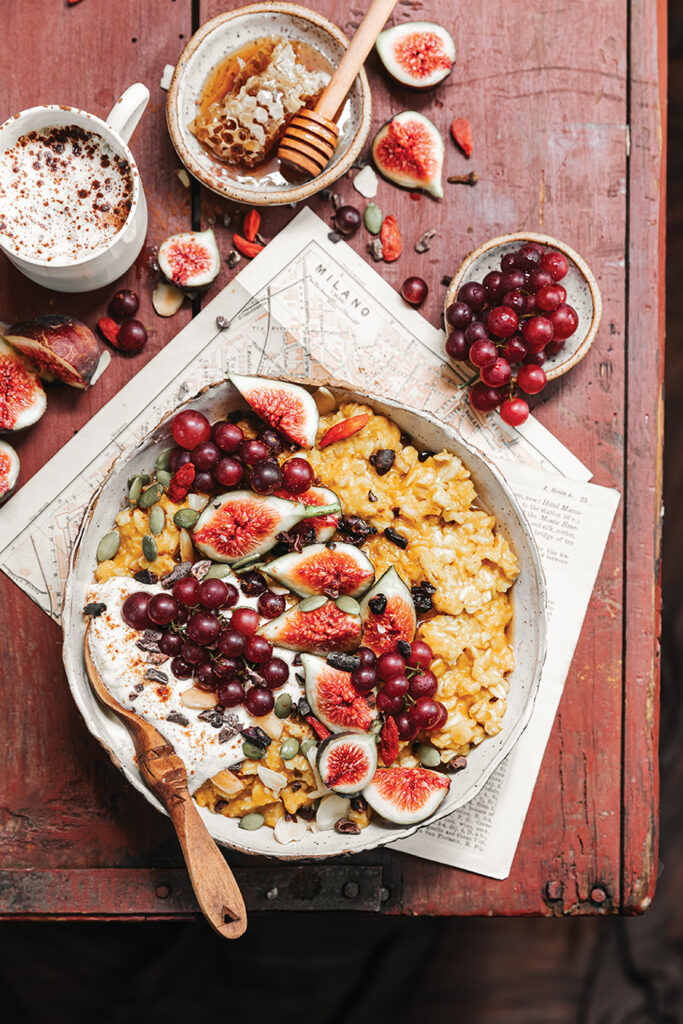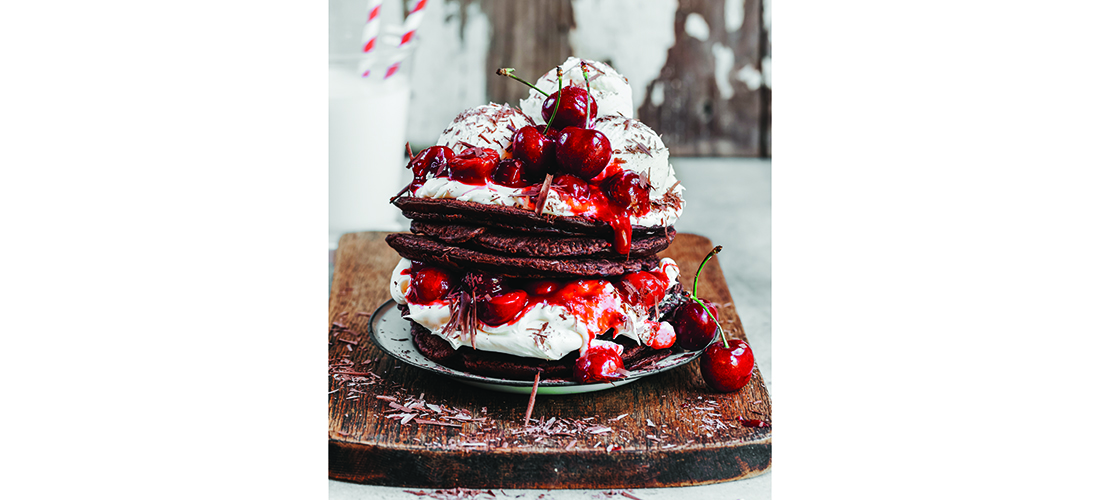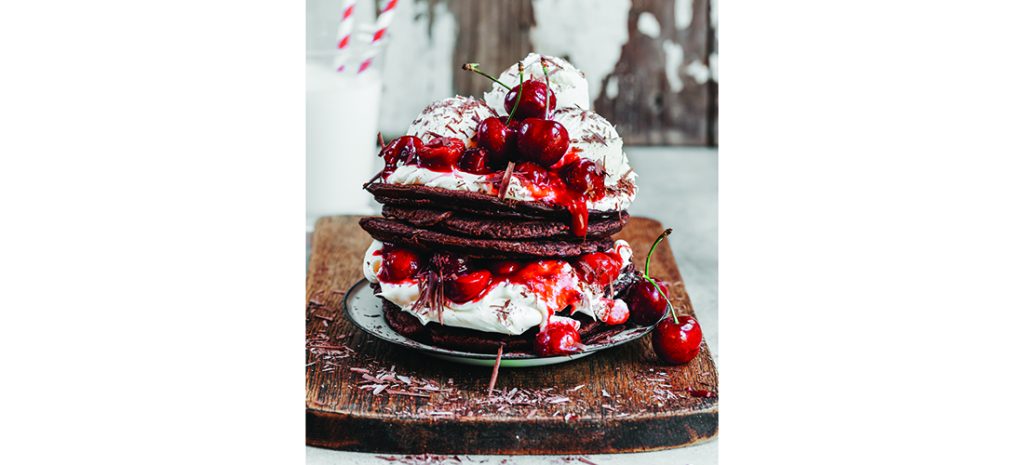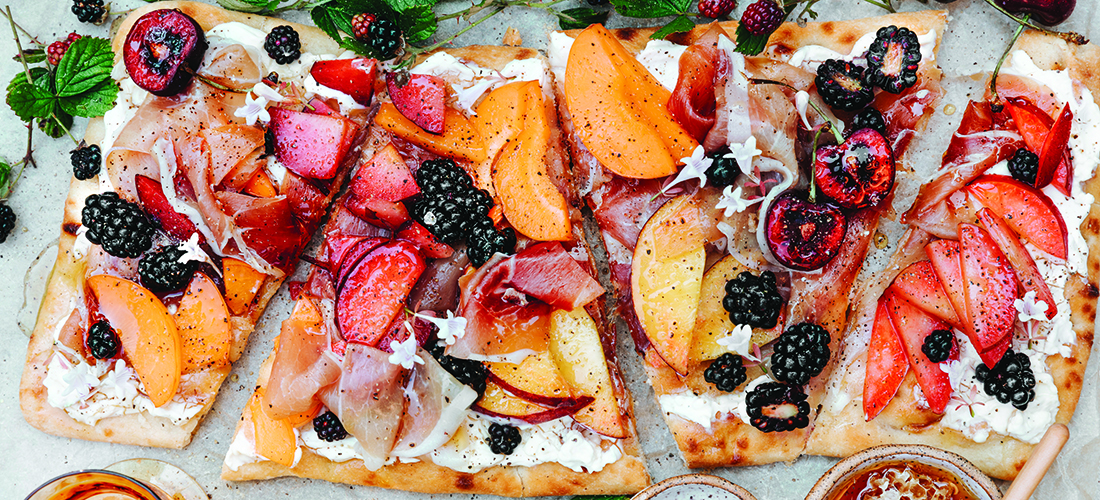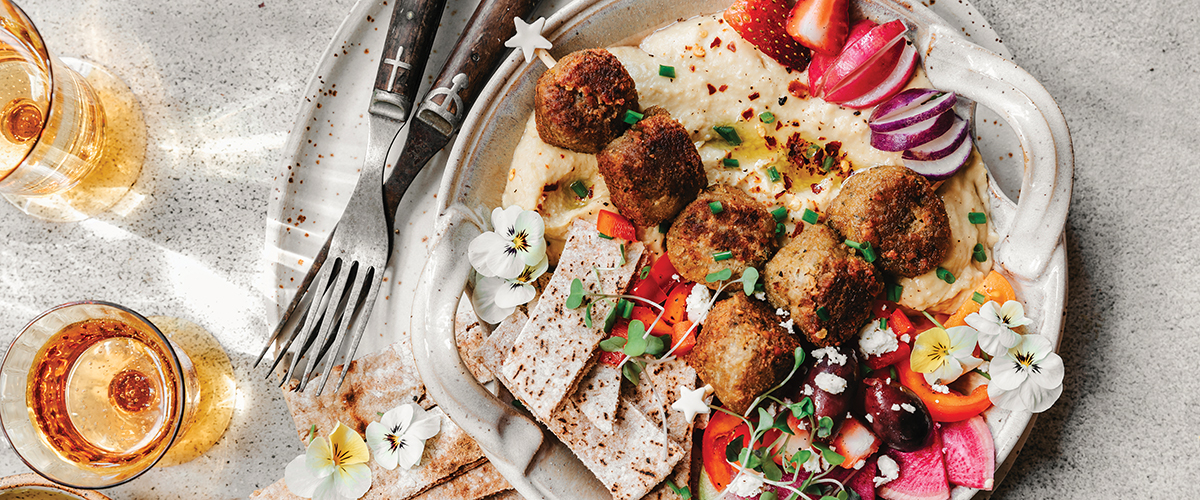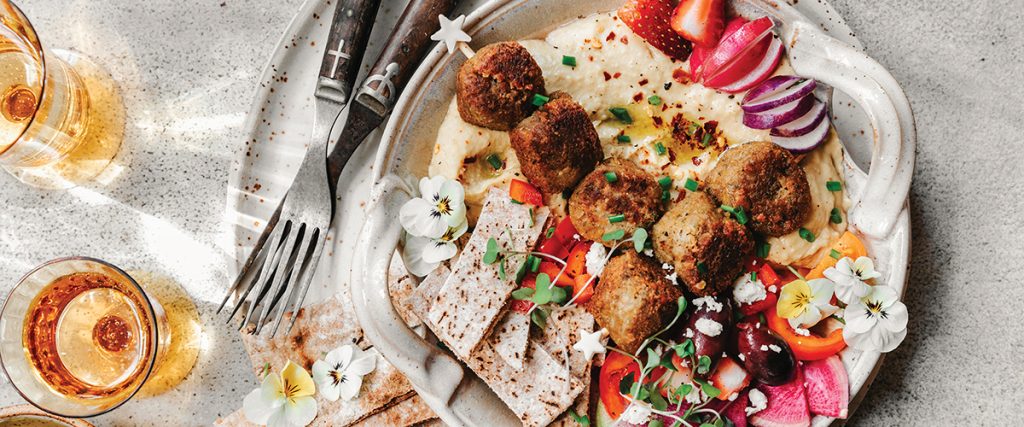Focus on Food
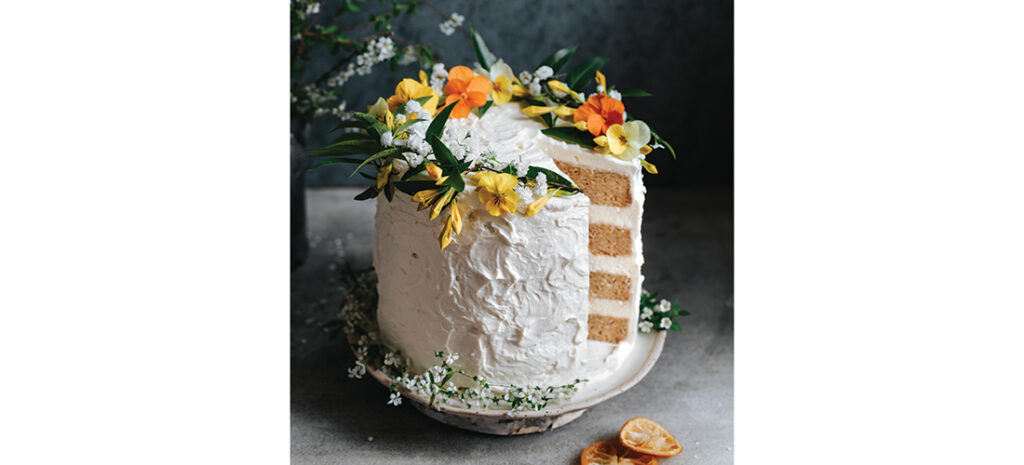
Hold the Sugar
The sweet, sweet world of cakes and frosting
Story and Photograph by Rose Shewey
American buttercream frosting is what happens when you leave your toddler unattended in the kitchen with access to baking supplies. Too harsh? Well, let’s look at the basic recipe together. To frost a medium-sized layer cake, you need about 2 cups of butter mixed with — brace yourselves — 2 whole pounds of powdered sugar. That’s two bags of sugar! I’m genuinely curious who the first baker was to not just contemplate this mélange, but actually go through with it. It would never cross my mind to use even one-half the amount of sugar this recipe calls for in pretty much anything — mainly because I like to taste flavors other than, you know, tooth-achingly sweet. In case you were wondering, American buttercream is practically what is referred to as “mock cream.” Enough said.
Now that I have trampled all over your family tradition, you might be wondering: What frosting could possibly be better than the one Nana has been making for over half a century? It depends on what you need it for — “better” being a relative and subjective term anyway. To make a stable cream takes a bit more effort, involving more ingredients and equipment (a double boiler, for example), which can be intimidating to some. Frankly, though, I have relied on various types of simple, fluffy, cream-based frostings or, more recently, cake creams made with silky, rich mascarpone, for all sorts of frosting endeavors, and for layering cakes. Mascarpone holds up wonderfully at room temperature. It wouldn’t be my first choice at a sweltering midsummer picnic, but then again, what doesn’t sweat, melt or disintegrate when Dante’s Inferno takes hold in North Carolina during July and August? Exactly.
While actual cake recipe options can be a bit overwhelming, I tend to stick with my top three tried and true choices, one of them being this grain- and gluten-free cake recipe that stays fresh and dewy for many days thanks to the addition of yogurt. I have adapted this recipe many times over but this lemony, sunshiny variation — my tribute to springtime — is a family favorite. Goodbye winter, hello spring!
Gluten Free Lemon Cake with Mascarpone Cream
(Makes 10-12 servings)
Cake ingredients
4 eggs
3/4 cup full-fat milk
1/2 cup yogurt
1/2 cup coconut oil, melted and cooled
1 tablespoon apple cider vinegar
3 cups almond flour
1 cup tapioca flour
1/4 cup coconut flour
3/4 cup granulated sugar
2 teaspoons baking soda
1 teaspoon salt
zest of one organic lemon
Frosting ingredients
16 ounces heavy whipping cream
1/2 to 3/4 cup powdered sugar, to taste
16 ounces mascarpone cheese
1/4 teaspoon salt
1 teaspoon lemon zest (optional)
Preheat your oven to 350F and line the bottom of two 6-inch springform cake pans with parchment paper. Grease the sides, if needed. Add all wet ingredients to a large bowl and whisk until smooth. In a separate bowl, combine all dry ingredients, then add the entire contents to the wet ingredients. Stir to combine and divide the batter between the two springforms. Bake for about 35-40 minutes or until a toothpick inserted comes out clean. Allow cakes to fully cool down, release from springforms and divide each cake into two layers (four total) and set aside.
For the frosting, chill a large mixing bowl (metal or glass) for about 20 minutes. Add heavy whipping cream and powdered sugar and beat until stiff peaks form, then add mascarpone and continue whisking until smooth. Distribute cream evenly between layers and frost the outside of your cake. If the cream feels a little soft, chill for 10-20 minutes and resume working on your cake. PS
German native Rose Shewey is a food stylist and food photographer. To see more of her work visit her website, suessholz.com.

